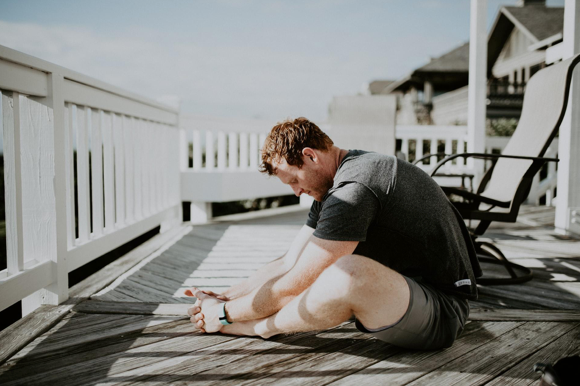Photo by Scott Broome on Unsplash
Exercise has countless benefits for all of us, but living with a disability can make fitness goals a little harder to reach. Nevertheless, there are many ways in which people with disabilities can focus on fitness routines that suit their abilities. Here are some tips and resources, courtesy of Fire Team Fit.
The Impact of Exercise
Exercise is healthy for everyone, but the Centers for Disease Control points out specific benefits for people with disabilities. For example, people with chronic conditions can improve their strength and stamina. Those with mental health challenges may improve their mood by exercising.
Exercise can also reduce symptoms associated with some disabilities as well as diseases like heart disease, high blood pressure, and arthritis. Staying fit isn’t a cure-all for every ailment or chronic health issue, but physical activity has countless positive side effects.
Find Your Fitness Routine
All bodies are different, so fitness is never one size fits all. Many people use modifications for common exercises or choose fitness routines that work with their body type, physical limitations, and preferences. Explore a variety of fitness techniques to find what works for you.
For example, if mobility is a challenge, try seated whole-body exercises to get moving and build stamina. Deep breathing and stretching may be a helpful start if stiff muscles or chronic pain limit your ability to exercise.
People with ichthyosis may want to avoid exercises that are in the direct sun. Yoga can be a great way to tone and stretch muscles. Or choose to walk in your neighborhood or local park if there are shaded areas. Living in an area with a high walk score means being able to walk more places instead of driving, but pay attention to the time of day and what you are wearing to avoid too much sun exposure.
Start slowly when trying any new exercise, especially if you have a chronic condition. Verywell Fit recommends easing into your fitness regimen and watching for issues like swelling, dizziness, or anxiety.
Build Up Motivation
Finding motivation is often the biggest challenge for anyone starting a new fitness routine. Especially if your disability involves pain or fatigue, it can be even more difficult to begin. If a personal pep talk isn’t enough of a motivator, try other ways of building enthusiasm for exercise.
For example, attaching workout goals to rewards like an episode of your favorite show or buying a new book could offer the motivation you need. Or, you might indulge in a favorite hobby, buy yourself something small, or focus a full day on self-care. Feel free to pamper yourself for reaching your goals, even small ones!
Start the Day Right
Focusing on fitness is a great way to begin your day, but there are other means of starting out the morning in a positive way. Try to start your day with healthy habits and set the tone. Then, making time for your workout will come naturally.
Good habits like avoiding social media time, seeking out good news, or reading an inspirational book are excellent day-starters. By avoiding negativity first thing in the AM, you’re creating a positive tone that will last beyond breakfast.
Speaking of breakfast: fuel your body with nutritious foods in the morning. You’ll feel the difference as your day progresses. However, people with chronic digestive problems or ichthyosis will want to avoid trigger foods. If you’re not sure what foods trigger a flare up, start with a food journal and locate your patterns. Otherwise a traditionally healthy meal may make you feel worse.
Create a Home Gym
A gym membership can be a beneficial tool for wellness, but the costs can add up, and travel time is wasted time. Working out at home is doable with a few simple pieces of equipment, even if you don’t have a home gym or extra room.
For example, at-home fitness equipment like resistance bands, small weights, a jump rope, exercise mats, and even your home’s stairs can offer a well-rounded workout. Depending on your fitness goals and ability level, you might add a kettlebell, barbell, or exercise balls to your home gym.
Think Outside the Gym
Many forms of exercise are accessible or modifiable for people with disabilities, and water activities are no exception. Aquatic exercise doesn’t require swimming and offers low-impact aerobic activity.
If you exercise in a public or gym pool, it’s as simple as arriving there and getting in the water. With a home pool, whether in-ground or above-ground, balancing the pool water chemistry is essential. Ensure the water is safe and balanced before preparing for your workout.
Care for Your Overall Health
Regular visits with your healthcare provider are vital to understanding and managing your chronic condition. If you’ve been avoiding appointments because of costly health insurance, look into low cost options in your state. The Affordable Care Act prompted states to create programs to make healthcare more accessible to everyone, so take advantage of these programs, especially if you are self employed.
Embracing fitness can make a monumental difference in your life, no matter your ability level. From a healthy morning routine to building strength and stamina, fitness complements a healthy lifestyle even with disability complications. Choose a fitness regimen that aligns with your needs, and you might be surprised at the progress you can make.
Fire Team Fit an array of weightlifting accessories and MMA gear to help you take your workout to the next level. Explore our site to see what we have to offer.

